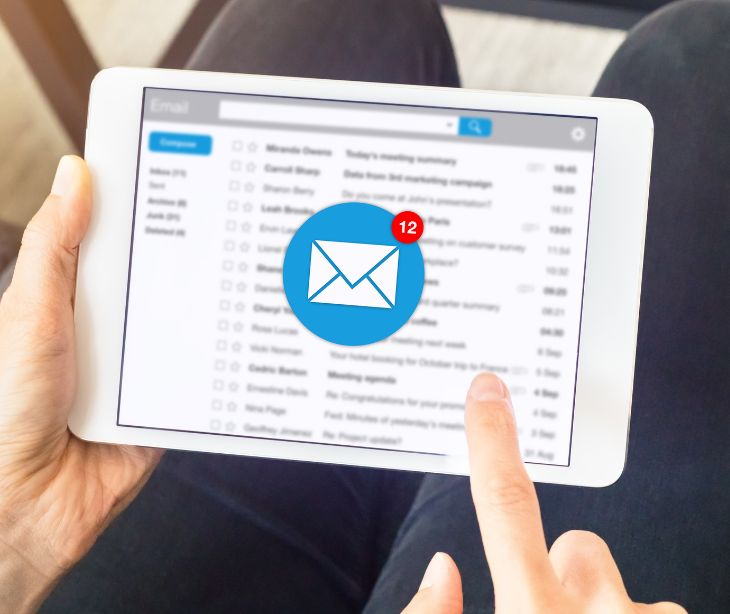
As we look forward to 2024, email marketing strategies continue to evolve, shaped by emerging trends and technological advancements. A comprehensive analysis of over 14.5 million emails sent by healthcare organizations in 2023 highlighted trends that are set to influence email marketing strategies in the upcoming year. We’ll be looking at how 2023 statistics influence how 2024 marketing strategies should look.
A look back at Q4 email marketing trends for 2023
The analysis of over 14.5 million emails sent by 121 healthcare organizations in the latter half of 2023 showed an average view rate of approximately 30.98%, a click-through rate of about 2.31%, and a low unsubscribe rate of around 0.06%.
Another statistic from 2023 is the comparison between drip and marketing emails. Marketing emails experienced higher view rates compared to drip emails in Q4. However, drip emails excelled in click rates and click-through rates, indicating higher engagement.
A look at email specifics revealed some interesting facts including that in Q4, Thursday emerged as the best day to send drip emails with the highest click-through rate, and Sunday was the most effective for marketing emails regarding view rate. There was a decrease in click rates from Q3 to Q4 for both email types, and the bounce rate for healthcare marketing emails improved from Q3 to Q4.
Read more: Trends in healthcare email marketing: Q4 2023 insights
The strategies to look out for
- Drip campaign optimization: Given the effectiveness of drip emails over marketing emails in certain metrics (like click-through rate), organizations should focus on optimizing their drip campaigns. This could involve timing sequences based on user actions, customizing content to the recipient's stage in the customer journey, and testing different intervals between emails.
- Seasonal and day-specific targeting: Leverage insights from the data on how email engagement varies by seasons and days of the week. Tailor email campaigns to capitalize on higher engagement days. For instance, if drip emails perform best on Thursdays, schedule content releases or calls to action on these days.
- Interactive content development: To combat the decreasing click-through rates, develop more interactive email content. This can include embedded videos, interactive polls or quizzes, and other engaging elements encouraging recipients to interact with the email beyond just reading it.
- List segmentation based on engagement levels: Segment email lists not just by demographics or customer journey stage but also by engagement level. Create specialized content or re-engagement campaigns to awaken the interest of subscribers who have low engagement rates.
- Email design innovation for better view rates: Experiment with innovative email designs to increase view rates. This could involve using dynamic content, personalized images, or even integrating augmented reality elements, especially for mobile users.
- Leveraging user-generated content: Incorporate user-generated content in emails to build community and authenticity. This could be customer testimonials, user-submitted photos, or case studies. This strategy provides relatable content and increases customer engagement and loyalty.
- Strategic use of automation for personalization: Use automation tools to personalize emails at scale. This might involve dynamically changing content based on user behavior, such as abandoned cart emails with personalized product recommendations.
- HIPAA compliant marketing for healthcare emails: For healthcare organizations, developing HIPAA compliant email marketing strategies cannot be neglected. This involves securely handling patient data and ensuring the content is informative and relevant to the audience without compromising privacy.
- Employing predictive analytics for future campaigns: Use predictive analytics to forecast future trends and subscriber behavior. This can help in planning content themes, timing campaigns for maximum impact, and identifying potential segments for targeted marketing.
- Content relevancy checks and adjustments: Regularly review and update the content of email campaigns to ensure it will remain relevant, especially in fast-changing industries like healthcare. This includes updating statistics, references, and even call-to-actions to keep the content fresh and engaging.
The performance metrics to observe
- Open rate: Required for gauging how well your subject lines and send times are performing.
- Click-through rate (CTR): Indicates the effectiveness of your email content and calls to action.
- Conversion rate: Directly measures the success of the email in prompting recipients to take a desired action.
- Bounce rate: Helps in assessing the quality of the email list and the effectiveness of list management practices.
- Unsubscribe rate: Necessary for understanding recipient engagement and content relevance.
- Email list growth rate: Indicates the health of your email marketing efforts in attracting new subscribers.
- Engagement over time: Provides insights into how engagement with your emails evolves, guiding long-term strategy.
- Spam complaint rate: Critical for ensuring your emails are well-received and not perceived as unsolicited or irrelevant.
- Overall ROI (Return on Investment): Measures the financial effectiveness of your email marketing campaigns.
- Click-to-open rate: Offers insights into how compelling your email content is to those who open the emails.
How to utilize metrics alongside an effective email strategy
Email metrics serve as the navigational instruments of an email marketing strategy, guiding marketers through the complex waters of customer engagement and campaign effectiveness. They act as a mirror, reflecting the impact of each email sent, and provide invaluable insights into the collective psyche of the audience. Marketers can understand the subtle nuances of consumer behavior and preferences by analyzing these metrics.
This understanding is comparable to conversing with each recipient, where their actions and reactions shape the future course of the dialogue. These metrics empower marketers to fine-tune their strategies, ensuring that each email reaches its destination and resonates with the audience.
Changes in 2023 that could impact your 2024 marketing strategy
The upcoming changes in Gmail and Yahoo's email policies set to take effect in February 2024 will significantly impact email marketing strategies and campaigns. These updates focus on enhancing email security and ensuring genuine, user-consented communication. For marketers, this means adapting to stricter requirements such as using SPF, DKIM, and DMARC for email authentication, maintaining valid DNS records, and complying with new spam rate thresholds. The emphasis on easy unsubscription processes, including incorporating one-click unsubscribe links, will necessitate revisions in how marketers manage their email lists and engage with their audience.
Furthermore, the distinction made between different types of email senders, especially for those dispatching more than 5,000 emails per day, adds an extra layer of compliance. This includes the need for additional email security measures and monitoring tools to keep spam rates low. The implication for email marketing campaigns is clear: there will be a heightened need for transparency, security, and user consent. Marketers will have to invest more in maintaining list hygiene, ensuring relevance and clear consent in their communications, and staying vigilant about their sender reputation to prevent their emails from being flagged as spam.
Read more: Google announces new email guidelines for 2024
See also: How to set up DKIM and SPF records
Subscribe to Paubox Weekly
Every Friday we'll bring you the most important news from Paubox. Our aim is to make you smarter, faster.




